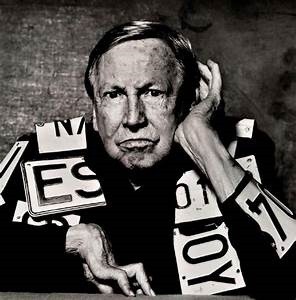Robert Rauschenberg (1925-2008)Robert Rauschenberg, original name Milton Rauschenberg, (born October 22, 1925, Port Arthur, Texas, U.S.—died May 12, 2008, Captiva Island, Florida), Robert Rauschenberg (1925-2008) American painter and graphic artist whose early works anticipated the Pop art movement.
Robert Rauschenberg (1925-2008)Robert Rauschenberg, original name Milton Rauschenberg, (born October 22, 1925, Port Arthur, Texas, U.S.—died May 12, 2008, Captiva Island, Florida), Robert Rauschenberg (1925-2008) American painter and graphic artist whose early works anticipated the Pop art movement.
Rauschenberg knew little about art until he visited an art museum during World War II while serving in the U.S. Navy. He studied painting at the Kansas City Art Institute in 1946–47, changed his name from Milton to Robert because it sounded more artistic, and studied briefly in Europe. During 1948–50 he studied at Black Mountain College, North Carolina, under the Bauhaus master Josef Albers and at the Art Students League in New York City.
Rauschenberg’s first paintings in the early 1950s comprised a series of all-white and all-black surfaces underlaid with wrinkled newspaer. In subsequent works he began to explore the possibilities of making art from such objects as Coca-Cola bottles, traffic barricades, and stuffed birds, calling them “combine” paintings. In 1955 Rauschenberg became associated with the Merce Cunningham Dance Company, first as a designer of costumes and sets and later as a technical director. He also produced theatrical pieces in collaboration with composer John Cage.
From the late 1950s Rauschenberg experimented with the use of newspaper and magazine photographs in his paintings, devising a process using solvent to transfer images directly onto the canvas. About 1962 he borrowed from Andy Warhol the silk-screen stencil technique for applying photographic images to large expanses of canvas, reinforcing the images and unifying them compositionally with broad strokes of paint reminiscent of Abstract Expressionist brushwork. These works draw on themes from modern American history and popular culture and are notable for their sophisticated compositions and the spatial relations of the objects depicted in them. During this period his painting became more purely graphic (e.g., Bicycle [1963]) than the earlier combines. By the 1970s, however, he had turned to prints on silk, cotton, and cheesecloth, as well as to three-dimensional constructions of cloth, paper, and bambooin an Oriental manner.
Among Rauschenberg’s preoccupations from the 1970s to the 1990s were lithography and other printmaking techniques. He continued to incorporate imagery from the commercial print media but began to rely more heavily on his own photography. Some of his works were influenced by visits with artists in such countries as China, Japan, and Mexico. In 1998 he received the Japan Art Association’s Praemium Imperiale prize for painting.
